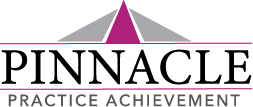Get Your Documents in Order
The clock is ticking (the 10-day count down began on December 27th when President Trump signed the new Coronavirus stimulus package) for the SBA to issue regulations including the date that it will begin accepting applications for the next round of PPP funding from lenders. In the meantime, you will want to start collecting records of payroll level and revenues in 2019 and 2020 which will likely be requested for PPP loan eligibility.
*For initial draw applications you will need:
Payroll tax filings such as 941,940/944, Schedule C, or payroll process records, as well as bank statements or bank connections, and/or other documents pending SBA guidance
*Lenders are still awaiting SBA guidance for second draw applications
Here is what we know for now:
Existing PPP borrowers may apply for a second loan, provided they have 300 or fewer employees and can demonstrate they experienced a 25% reduction in gross receipts during a quarter in 2020 compared with the same quarter in 2019.
In addition, they must:
- Use First Draw funds before applying for a Second Draw
- Have no more than 300 employees
- Have been in operation as of February 15, 2020
- Have a 25% or more decline in gross revenue
- Small businesses that did not receive a loan under the first PPP program may be eligible for a loan under this new round.
- Currently, there are no restrictions on deciding to work with a different lender for the Second Draw.
$284.5 Billion is “available” but what does this mean to you?
- $15B for SMBs with 10 or fewer employees or loans of less than $250K in low-income areas
- $25B for Second Draw PPP Loans for businesses with 10 or fewer employees or loans of less than $250K in low-income areas
- $35B for Initial Draw PPP Loans
- There is a hard cap at $2M and you can only receive one Second Draw
- Second draw amount = 2.5x average monthly 2019 payroll costs (3.5x for food services).
“Payroll Costs” means the sum of payments to employees that are:
- A salary, wage, commission
- Tips, vacation, parental, family, medical or sick pay
- Allowance for dismissal or separation
- Payment for group health care benefits, including insurance premiums
- Payment of retirement benefits
- Payment of state or local tax on employee compensation (e.g., payroll tax)
New expenses that count as payroll also include:
- Employer-provided group insurance benefits (life, disability, vision, and dental)
- New “covered operations” like software, cloud computing and similar operating expenses
- Certain property damage
- Essential supplier costs
- Worker protections
EIDL advances will no longer reduce the amount by which a borrower has its PPP loan forgiven. SBA will issue rules for borrowers who already received forgiveness.
If you are considering applying for a first or second PPP loan, now is the time to find a lender who will be participating. One example is Blue Vine (www.bluevine.com) as they have been actively communicating their eagerness to participate in the second round of this program.
I will be in touch as more information becomes available, but for now, I wish you a very Happy and Healthy New Year!
